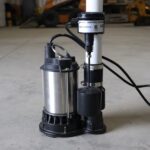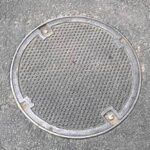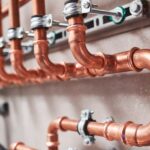Pipes are essential components of our plumbing systems, transporting water, gas, and sewage throughout residential and commercial buildings. Unfortunately, they are also susceptible to failures, leading to pipe bursts that can cause significant damage, costly repairs, and even health hazards. In this article, we will delve into the various causes of pipe bursts, their implications, and preventive measures to protect your plumbing system.
What is the meaning of Pipe Bursts?
A pipe burst occurs when the internal pressure of a pipe exceeds its capacity, leading to a rupture. This can happen in various types of pipes, including those made of PVC, copper, galvanized steel, and cast iron. The aftermath of a pipe burst can be disastrous, resulting in water damage, mold growth, and structural issues. Understanding the underlying causes can help homeowners and property managers take preventive action.
What Causes Pipe Bursting?
There could be various reasons behind pipe bursts. Some of the notable ones along with their preventive measures are explained below.
1. Freezing Temperatures
The Mechanism Freezing Temperature Pipe Bursting
One of the most common causes of pipe bursts, especially in colder climates, is freezing temperatures. When water inside a pipe freezes, it expands, increasing the pressure within the pipe walls. If the pressure exceeds the pipe’s capacity, it will rupture. Typically, pipes located in unheated areas like basements, attics, and exterior walls are more vulnerable to freezing pipe bursts (Refer to Fig. 1).

Prevention Strategies Against Pipe Burst Due to Freezing
Insulation: Insulating pipes in unheated areas can help maintain a consistent temperature.
- Heat Sources: Using space heaters or heating cables can prevent pipes from freezing.
- Dripping Faucets: Allowing faucets to drip during extreme cold can relieve pressure and keep water moving.
2. Corrosion and Age
What is Pipe Corrosion?
Corrosion is a natural process that occurs over time due to chemical reactions between the pipe material and the substances flowing through it. Factors such as water acidity, oxygen levels, and temperature can accelerate corrosion, weakening pipes and making them more susceptible to bursting. Fig. 2 below shows an example of a pipe burst due to corrosion and aging.

Identifying Pipe Corrosion
Signs of corrosion may include discoloration, rust, or leaks around joints. Older pipes, particularly those made of galvanized steel or cast iron, are especially at risk.
Prevention Strategies
- Regular Inspections: Conduct regular plumbing inspections to identify early signs of corrosion.
- Water Treatment: Using water softeners can help reduce corrosive elements in the water supply.
- Replacement: Consider replacing older pipes with corrosion-resistant materials like PVC or PEX.
3. Water Pressure Issues
The Role of High Pressure
Water pressure refers to the force at which water travels through pipes. Excessively high pressure can lead to pipe bursts, especially in older systems that may not be equipped to handle modern pressure levels.
Measuring Water Pressure
A standard residential water pressure range is between 40 to 60 psi (pounds per square inch). Pressure exceeding 80 psi can be problematic.
Prevention Strategies
- Pressure Regulators: Installing a pressure-reducing valve can help maintain safe pressure levels.
- Regular Checks: Monitor water pressure regularly, especially after changes in plumbing systems.
4. Pipe Burst Due to Poor Installation
Installation Mistakes
Improperly installed pipes can lead to weak points in the plumbing system. This may include inadequate fittings, wrong materials, or lack of proper supports.
Signs of Poor Installation
Signs of poor installation may include frequent leaks, unusual noises, or visible sagging in pipes.
Prevention Strategies
- Hire Professionals: Always hire licensed plumbers for installation to ensure proper techniques and materials are used.
- Verify Codes: Ensure that all installations comply with local plumbing codes and regulations.
5. Tree Root Intrusion
The Impact of Tree Roots
Tree roots are a lesser-known cause of pipe bursts, particularly in older systems. Roots can penetrate cracks and joints in pipes, leading to blockages and increased pressure that can ultimately result in bursts. Fig. 3 below shows an example of pipe bursting due to tree root intrusion..

Identifying Tree Root Issues
Signs of tree root intrusion may include slow drainage, gurgling sounds, or frequent backups.
Prevention Strategies
- Root Barriers: Installing root barriers can prevent roots from reaching pipes.
- Regular Inspections: Conducting regular inspections of underground plumbing systems can help identify potential issues early.
6. Sudden Temperature Changes
Thermal Expansion and Contraction
Rapid changes in temperature can cause pipes to expand and contract. This stress can lead to material fatigue and eventual failure, especially in older pipes.
Prevention Strategies
- Expansion Joints: Installing expansion joints can help accommodate thermal changes without damaging pipes.
- Consistent Temperatures: Maintaining a consistent temperature in plumbing areas can minimize stress on pipes.
7. Excessive Load and Ground Movement
Structural Loads
Heavy loads on top of pipes, such as soil from landscaping or heavy equipment, can lead to pressure on underground pipes, causing them to bend or break.
Ground Movement
Soil erosion, earthquakes, or even heavy rain can cause ground movement, resulting in shifting pipes that may rupture under stress.
Prevention Strategies
Proper Backfilling: Ensure that pipes are properly backfilled and supported during installation.
Regular Monitoring: Regularly check for signs of ground movement or shifting.
8. Chemical Damage
Corrosive Chemicals
Certain chemicals in cleaning products, industrial processes, or even the water supply can corrode pipes. This is especially true for metal pipes, which can be more susceptible to chemical damage.
Prevention Strategies
- Water Quality Testing: Regularly test water for corrosive elements and adjust treatment accordingly.
- Proper Disposal: Ensure that chemicals are disposed of properly to avoid accidental pipe exposure.
9. Overuse and Wear and Tear
High Demand on Pipes
Increased demand on a plumbing system can cause wear and tear. High water usage, especially during peak times, can lead to stress on pipes, making them more likely to burst.
Signs of Wear and Tear
Signs of wear and tear may include frequent leaks, reduced water pressure, or visible corrosion.
Prevention Strategies
- Water Usage Management: Implement water-saving measures to reduce the overall demand on the plumbing system.
- Regular Maintenance: Schedule routine maintenance checks to identify and address issues before they escalate.
10. Clogs and Blockages
What are Clogs?
Clogs are one of the most common plumbing issues, often caused by debris, grease, hair, or mineral buildup in pipes. When water cannot flow freely, pressure builds up, which can lead to bursts if the blockage is severe.
Identifying Clogs
Signs of clogs include slow drainage, gurgling sounds from fixtures, and water backing up into sinks or tubs. Persistent issues with drains may indicate a more serious blockage.
Prevention Strategies
- Regular Cleaning: Regularly clean drains and remove visible debris to prevent buildup.
- Use Drain Screens: Install screens in drains to catch hair and other materials before they enter pipes.
- Avoid Chemical Drain Cleaners: These can be corrosive and may worsen the problem. Opt for natural cleaning methods or professional help instead.
11. Physical Damage
Types of Physical Damage
Pipes can be physically damaged by various factors, including construction work, accidental impacts, or even shifting foundations. This damage can create weak points that are prone to bursting.
Recognizing Physical Damage
Signs of physical damage may include visible cracks or dents in pipes, unusual noises during water flow, or wet patches around the vicinity of the pipes.
Prevention Strategies
- Protective Barriers: Use protective barriers around exposed pipes to prevent accidental damage during construction or landscaping.
- Regular Inspections: Schedule routine inspections to check for any signs of physical wear or damage, especially in areas with heavy foot traffic or construction activity.
- Educate Family Members: Ensure that everyone in the household is aware of the importance of avoiding excessive force on fixtures and pipes.
Understanding the various causes of pipe bursts is crucial for homeowners and property managers alike. By recognizing the signs of potential issues and implementing preventive measures, you can safeguard your plumbing system from the risks associated with pipe failures. Regular inspections, proper installation, and proactive maintenance can save you time, money, and stress in the long run.
Additional Resources
To learn more about the causes and prevention of pipe bursts, the following resources can be referred:
- Local Plumbing Codes: Check with your local authorities to ensure compliance with plumbing codes.
- Professional Assistance: Consult with licensed plumbers for assessments and repairs.
- Homeowner’s Insurance: Review your insurance policy to understand coverage for water damage caused by pipe bursts.
By staying informed and taking proactive steps, you can protect your property from the devastating consequences of pipe bursts.






